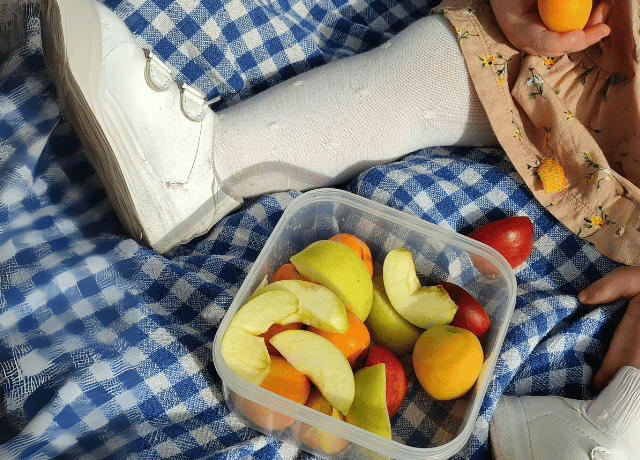As much as you may love for your child to eat whatever you prepare, we both know that is not always the case. Having a picky eater can be challenging as you try to get them adequate and balanced nutrition, but all is not lost.
In Part 1 on this series about nutrition for picky eaters, I shared seven recipes to get them excited about new foods.
But what if your child is not ready to taste new foods? In this case, I recommend taking a step back and start by exposing them to different foods.
This is done in two phases: first you need to reframe how you approach them about new foods, then we can get to exposure.
PHASE 1: Reframing Your Approach
Model the Behavior You Want Exhibited
It is important to model the food behavior you are hoping your child adopts.
If they see you eating the food they are wary of, they are more likely to assume it is safe and try for themselves.
This same concept applies to the faces you make or the words you choose. Sometimes we have to challenge our own thoughts and behaviors around food in order to keep eating neutral for our children.
Stop Fighting For Control at all Costs
Try to keep an open mind, free of too many expectations. Respect and trust a child’s likes, dislikes, and allow them to listen to their bodies. It is common for a child to eat varying amounts of food both day-to-day and meal-to-meal.
Refrain from adding pressure as this can result in adverse outcomes, such as increased avoidance of certain food.
Try to stay neutral and encouraging, engaging in conversation about the new foods, using senses other than taste at first.
Add Novelty to the Environment
If trying a new food activity at the table, try changing the environment if you notice your child associates the table with eating and mealtime stress. This could be a mat on the floor or going outside.
Trial an outdoor picnic that introduces new foods away from the table in a calm environment.

PHASE 2: Exposing Your Child to New Foods
Utilize low-pressure activities where the child is not expected to eat, but can use their senses and creativity while exploring a food new to them.
Integrate Foods Into Arts & Crafts Activities
Make it fun! Edible or non-edible crafts can both work here.
- Use broccoli as a paint brush, using dressing or actual paint
- Glue dried pasta (maybe a different shape or colored pasta than usual) to paper and make a picture
- Make watercolor out of vegetable juices, such as beets
- Create animal figures with cut veggies
- Cornstarch and water with food dye of choice
- Homemade playdough- this has the added bonus of your child helping you make it in the kitchen to then play with
As always, make sure your child knows what is edible in the activity and be mindful of choking hazards.
Use The Foods as Props in Games
See how high they can stack green beans, carrots or sliced cucumbers.
Add competition to the game! For example, who can stack the veggies higher without the tower falling first.
Competition can help exposure to difficult textures or messy foods your child may not enjoy.
This can look like:
- Prepare a certain amount of a food your child struggles with the texture of, such as 40 cubes of zucchini, or mini chocolate chips that will melt in their hands
- Distribute evenly between all players
- Have a jar and see who can place all of the food in the jar first to win

Tap Into Their Other Senses
Visual
- Depending on the age of your child, read them books with realistic pictures of food
- Find episodes of their favorite show where the character tries a new food
Auditory
- First, ask how they think a food will sound when you bite into it and chew it. Is it similar to anything else they have tried?
- Then take a bite of it yourself to demonstrate and discuss it, even if they don’t want to try it.
Smell
- Ask “What does this food smell like to you? Does it remind you of anything similar?” to get a dialogue going around the food.
- For extremely young children, such as babies, cooking meals at home can be an important part of the exposure to new foods.
Tactile
- Ask “How does it feel in your hands? What does it remind you of?”
- Some children hate being messy or the feeling of something slimy. Keep a wet towel nearby or try the texture of difficult food for your child in a baggy or with gloves to experience with a barrier
Final Reminder
It is important to mention that all children have individualized needs and what works for one may not work for the next. Meet each child where they are and advance slowly.
Today, I have provided an overview of a few different strategies, but there are many more to be explored and can be customized to your child’s needs.
I am all about balancing eating nutritiously while cultivating a healthy, peaceful relationship with food.
If this sounds like something you or your child could benefit from, I encourage you to book a nutrition consult where I can tailor selective eating strategies to you and/or your child’s schedule and food preferences.








